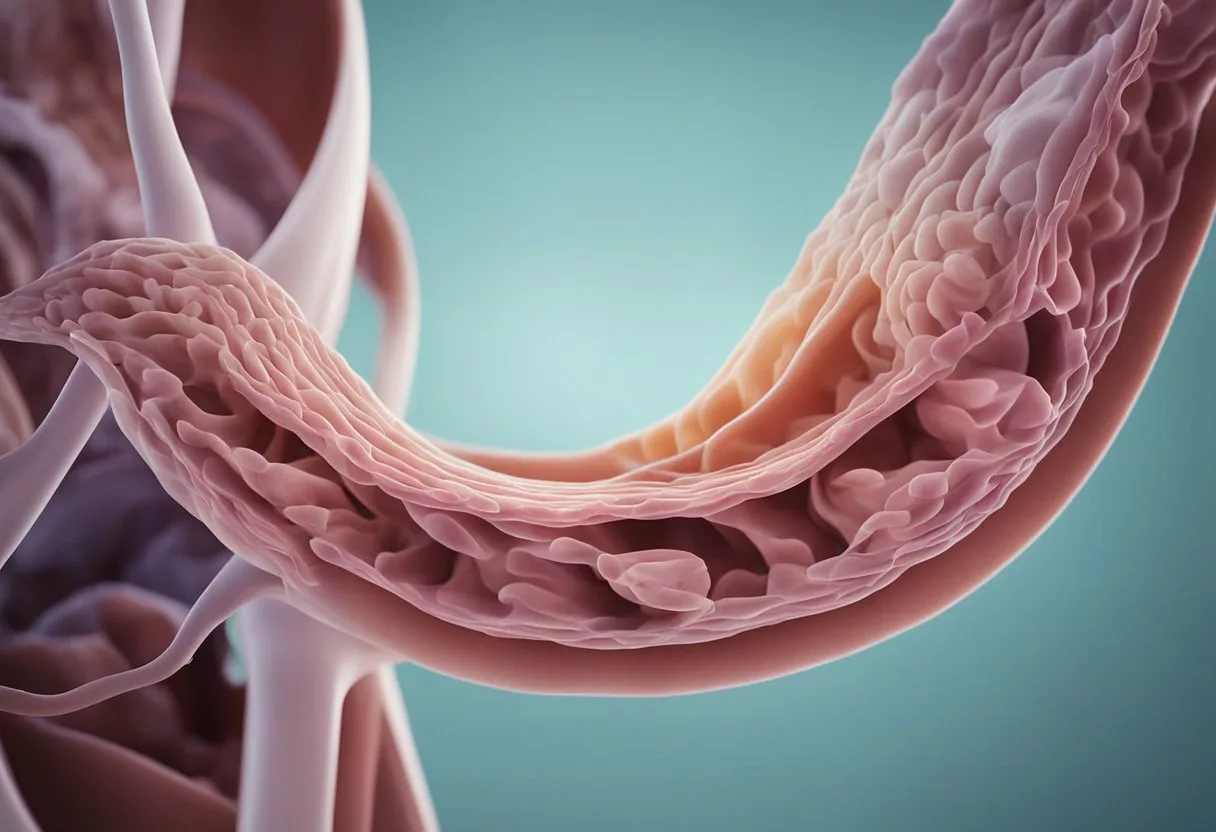Experiencing a menstrual period is a routine part of life for many individuals, but few fully understand the various changes their bodies undergo. When on your period, your body sheds the uterine lining, resulting in menstrual bleeding that typically lasts between 2 to 7 days. Hormonal fluctuations during this time can cause a range of symptoms like cramps, mood swings, and fatigue.

The menstrual cycle is divided into phases, each playing a crucial role in preparing the body for potential pregnancy. About 14 days before the period, ovulation occurs, which is when an egg is released from the ovary. This process is often accompanied by significant hormonal shifts that can affect both physical and emotional health.
Cramps, caused by the muscles of the uterus contracting to expel its lining, are a common experience during periods. Some individuals may also encounter premenstrual symptoms like breast tenderness and bloating up to two weeks before the period starts, as noted. Understanding these changes can help in managing symptoms effectively.
Key Takeaways
- Menstrual periods involve the shedding of the uterine lining.
- Hormonal changes during the menstrual cycle trigger various symptoms.
- Recognizing symptoms helps in managing menstrual health effectively.
Understanding the Menstrual Cycle
The menstrual cycle is a complex process involving various phases and hormonal changes that prepare the body for a potential pregnancy.
Phases of the Cycle
The menstrual cycle consists of several phases, each marked by different bodily changes. Day one begins with the menstrual phase, where the uterine lining sheds, causing bleeding that typically lasts 3 to 7 days.
Next, the follicular phase starts. During this phase, follicles in the ovaries grow, and the uterine lining thickens. Ovulation follows, usually around day 14 in a 28-day cycle. An egg is released due to a spike in luteinizing hormone (LH).
Lastly, the luteal phase occurs, lasting about 14 days. If fertilization doesn’t happen, hormone levels drop, leading to menstruation.
Hormonal Regulation
Hormones play a crucial role in managing the menstrual cycle. The hypothalamus signals the pituitary gland to release follicle-stimulating hormone (FSH), which encourages follicle growth.
Estrogen increases in the follicular phase, thickening the uterine lining. A surge in LH triggers ovulation. After releasing the egg, the ruptured follicle forms the corpus luteum, producing progesterone in the luteal phase. Progesterone and estrogen stabilize the uterine lining for a potential pregnancy.
Tracking the menstrual cycle can help understand individual patterns and variations. Each cycle’s length can range from 21 to 35 days, highlighting the importance of personalized tracking methods like calendars or apps.
Understanding hormonal changes and cycle phases provides valuable insights into reproductive health and helps manage symptoms more effectively.
Physiological Changes During a Period

During a period, significant physiological changes occur within the uterus. These changes involve the environment of the uterus and the shedding process of the uterine lining.
The Uterine Environment
The uterus undergoes substantial changes each month. As menstruation begins, the hormone progesterone drops sharply. This plunge triggers the shedding of the uterine lining. The endometrium, or the inner lining, begins to break down in preparation for its removal.
The lining thickens each month in anticipation of a potential pregnancy. If no fertilization occurs, this built-up tissue is no longer needed. Blood vessels in the uterine lining constrict, reducing blood flow, and initiating the shedding process.
The Shedding Process
The shedding process involves the expulsion of the uterine lining through the vaginal canal. Menstrual bleeding consists of blood, endometrial cells, and mucus. This blood may contain clots, which form from the thickened lining.
During the first few days of menstruation, the flow is typically heaviest. This is when most of the uterine lining is expelled. Blood loss can vary but usually ranges from 10 to 80 milliliters.
A typical period lasts between 3 to 7 days. Some may experience spotting, which is light bleeding either before or after the main menstrual flow. This is often due to hormonal fluctuations or the remaining shedding of the lining.
Common Symptoms and Self-Care

When on your period, it is common to experience various physical and emotional changes. These symptoms can often be managed through simple self-care strategies, helping to alleviate discomfort and improve well-being.
Physical Symptoms
Many experience cramps due to the uterus contracting to shed its lining. These contractions can cause pain in the lower abdomen. Over-the-counter pain relievers like ibuprofen are often effective.
Bloating is another common symptom. Cutting down on salt can help reduce this. Headaches may arise due to hormonal changes. Staying hydrated and getting enough rest can be beneficial.
Breast tenderness and sore breasts are frequent. Wearing a supportive bra can provide relief. Fatigue is also typical, making it important to get plenty of sleep and incorporate light exercise to boost energy levels.
Lower back pain can occur along with cramps. Applying a heating pad to the lower back can offer comfort. Food cravings often happen due to hormonal fluctuations; eating balanced meals can help keep cravings in check.
Emotional Changes
Mood swings are common during this time. Hormonal changes can cause irritability, anxiety, and stress. Taking deep breaths and practicing mindfulness or yoga can help manage these emotions.
Some also experience PMS symptoms like sadness or low mood. Engaging in favorite activities or talking to a friend can lift spirits.
Libido may fluctuate due to hormonal shifts. Understanding this variability can help in managing expectations and stress.
Overall, taking care of emotional health is crucial. If feelings of anxiety or depression feel intense, consider talking to a healthcare provider for support.
Reproductive Considerations

The menstrual cycle involves various phases affecting fertility and the impact of contraceptives. It’s crucial to understand how hormones, the release of eggs, and the use of contraceptives interact with the body.
Fertility and Ovulation
Ovulation is when an egg is released from the ovary. This usually happens around the middle of the menstrual cycle. The three days before ovulation, and the day of ovulation itself, are the most fertile days. During this time, the egg travels down the fallopian tube, where it can meet sperm and be fertilized.
Cervical mucus also changes to become thinner and more slippery to help sperm travel through the vagina and cervix. If the egg isn’t fertilized, it disintegrates, and menstruation begins. Hormones like estrogen and progesterone play important roles in regulating this process, affecting the quality and quantity of cervical mucus.
Contraceptive Impact
Contraceptives, such as birth control pills, patches, and IUDs, can significantly alter the menstrual cycle. These methods typically work by preventing ovulation. No egg is released, so pregnancy cannot occur. Birth control can also thicken cervical mucus, making it more difficult for sperm to reach any egg that might be released.
Some contraceptives affect the uterine lining, making it less likely for a fertilized egg to implant. Using these methods can also change the length and flow of menstrual bleeding. While some might experience lighter bleeding, others might notice more regular cycles. It’s important to follow medical advice to ensure these methods are used effectively.
Menstrual Health and Disorders

Menstrual health is an important aspect of a woman’s overall well-being. Irregularities and disorders can significantly impact daily life and may signal underlying health issues.
Common Menstrual Irregularities
Many women experience some form of menstrual irregularity at different stages of their reproductive lives. Irregular periods are often seen as either too frequent or infrequent bleeding. Some cycles are shorter than 21 days, while others exceed 35 days.
Polycystic ovary syndrome (PCOS) is a common cause of irregular periods. This condition results in hormonal imbalances that affect overall menstrual regularity. Perimenopause also brings changes, with cycles becoming more irregular as women approach menopause.
Other irregularities include heavy menstrual bleeding and missed periods. Heavy bleeding can interfere with daily activities and may require medical attention. Knowing what constitutes a normal cycle helps in identifying when to seek help from a healthcare provider.
Recognizing Menstrual Disorders
Several menstrual disorders can affect a woman’s health. Premenstrual syndrome (PMS) is one of the most well-known conditions, causing symptoms like cramps, mood swings, and fatigue. PMS typically appears one to two weeks before menstruation.
Dysmenorrhea, or painful periods, affects many young women. This condition can cause severe cramps and discomfort. Pain management strategies and medical treatments can provide relief.
Another concern is amenorrhea, the absence of menstruation. This disorder can be primary (if menstruation never begins) or secondary (if it stops after having been regular). Amenorrhea may indicate issues with the reproductive system or hormonal balances and needs evaluation by a healthcare provider.
Endometriosis is another serious condition where tissue similar to the uterine lining grows outside the uterus, causing painful periods and other complications. Treatment options vary, focusing on relieving symptoms and addressing any underlying reproductive issues.
Practical Management of Menstruation
Managing menstruation involves choosing the right hygiene products and using tools to track and predict menstrual cycles. These strategies help in effectively handling menstrual flow and planning for different scenarios.
Hygiene Products
Choosing the right hygiene products is essential. Pads and tampons are the most common options. Pads are ideal for those who prefer an external product and come in various absorbencies to match the flow. Tampons are an internal option, offering discreet protection and are also available in different absorbencies.
Menstrual cups and discs are reusable options that reduce waste. They are made of medical-grade silicone and can be worn for up to 12 hours, making them suitable for longer periods of wear.
Period underwear offers another reusable option. These absorbent undergarments can be used alone on light days or as backup to other products.
Selecting products with the right absorbency is key to preventing leaks and managing typical flow effectively.
Tracking and Prediction
Tracking the menstrual cycle helps in predicting periods and managing symptoms. Apps and calendars are useful for noting the start and end dates of periods. These tools help in spotting patterns and predicting the next period.
Hormonal birth control options like pills, implants, and patches can also help regulate cycles. These methods use progestin or a combination of hormones to control the length and intensity of menstrual flow.
Knowing the cycle’s phases aids in preparing for PMS and other symptoms. Regular tracking can help those with irregular periods and provide information for healthcare consultations.
Using a combination of digital tools and hormonal methods offers a comprehensive way to manage and predict menstrual cycles effectively.
Frequently Asked Questions

The menstrual cycle involves various changes in the body. These changes can affect physical strength, energy levels, and daily experiences.
What changes occur in the body during menstruation?
Menstruation involves shedding the uterine lining. Hormones like estrogen and progesterone fluctuate, leading to symptoms such as cramps, bloating, and mood swings. Some may experience breast tenderness or fatigue.
How long does a typical menstrual cycle last?
A typical menstrual cycle lasts about 28 days, but it can range from 21 to 35 days. Menstrual bleeding usually lasts between 3 to 7 days.
What are the four phases of the menstrual cycle?
The menstrual cycle has four phases:
- Menstrual Phase: Shedding of the uterine lining.
- Follicular Phase: Follicles in the ovaries mature.
- Ovulation: Release of the egg.
- Luteal Phase: Preparation for potential pregnancy.
What happens to the unfertilized egg during a period?
If the egg is not fertilized, it disintegrates and is absorbed by the body. The hormone levels drop, causing the uterine lining to shed, which results in menstrual bleeding.
How does menstruation affect physical strength or weakness?
During menstruation, hormonal changes can lead to feelings of fatigue and weakness. Some may notice reduced physical strength or endurance, while others might not experience significant changes.
What are the daily changes one might experience during their period?
Daily changes can include variations in energy levels, mood, and physical symptoms like cramps or bloating. Hormonal fluctuations can also impact appetite and sleep patterns. Each day of the period might bring different physical or emotional experiences.